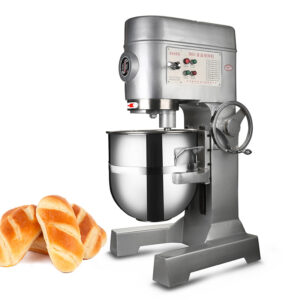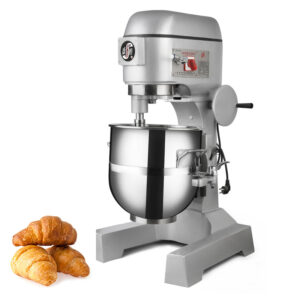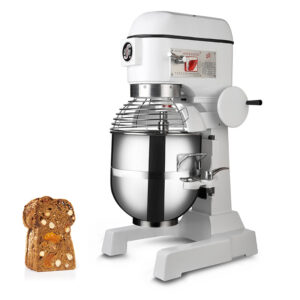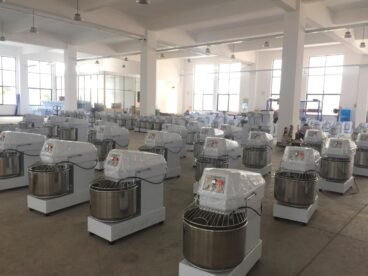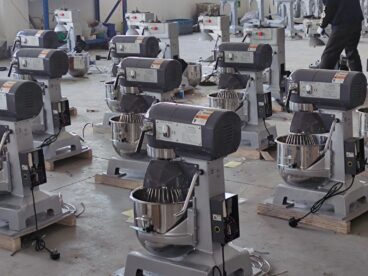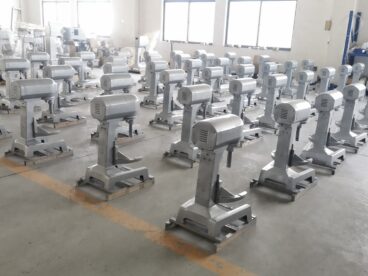Briefly introduce the importance of safety when using planetary mixers.
Highlight the versatility and efficiency of planetary mixers in various industries.
Section 1: Understanding Planetary Mixers
Define what a planetary mixer is and how it differs from other types of mixers.
Explain the components and features of a typical planetary mixer.
Discuss the various applications of planetary mixers in different settings.
Section 2: Safety Precautions Before Operation
Read the User Manual:
Emphasize the importance of thoroughly reading and understanding the user manual.
Highlight key safety instructions provided by the manufacturer.
Inspect the Mixer:
Guide users through a pre-operation inspection checklist.
Stress the significance of checking for any damages or loose components.
Workspace Preparation:
Explain the importance of a clean and organized workspace.
Emphasize proper ventilation and lighting for a safe working environment.
Part 3: Operational Safety Guidelines
Personal Protective Equipment (PPE): The use of a planetary mixer requires appropriate personal protective equipment (PPE) to ensure the safety of operators. Operators should wear acid-resistant gloves, protective eyewear, and a face shield. These gears help reduce the risk of injuries, especially when dealing with chemicals or materials that may splash.
Powering On the Mixer: Before starting the planetary mixer, operators should carefully inspect the power cord and plug to ensure they are not damaged. Connect the mixer to a stable power source and ensure the power switch is in the off position. Check all control buttons and switches for proper functioning before starting the mixer. Follow the manufacturer’s provided startup procedure to ensure the mixer begins operating safely.
Loading and Unloading Ingredients:
Proper Loading of Ingredients: Before adding ingredients, ensure the mixer is in a stopped state. Use appropriate tools to gradually introduce materials into the mixer, avoiding overloading to prevent machine overload.
Safe Unloading of Mixed Materials: After mixing is complete, stop the mixer first. Use suitable tools and methods to remove the mixed materials from the mixer, avoiding direct contact with the agitator or other rotating components.
Monitoring Mixer Operation: Operators should remain vigilant during the operation of the mixer, paying constant attention to its performance. Observe for any unusual noises, vibrations, or other anomalies. If any irregularities are noticed, stop the mixer immediately and conduct a thorough inspection and necessary repairs.
Avoiding Overloading: Planetary mixers have their rated working capacities, and operators should ensure not to exceed these limits. Overloading can lead to a decrease in mixer performance or even damage critical components. When dealing with large quantities of materials, mix in batches to ensure safe and efficient operation.
Regular Inspection of Agitators: Regularly checking the status of the agitator during operation is crucial. Ensure that the agitator is not loose or damaged, and rotating components are functioning correctly. Regular inspections can prevent potential failures and ensure the mixer remains efficient during long-term use.
Emergency Shutdown: Operators should be familiar with the emergency shutdown procedure of the mixer and know the location of the emergency shutdown button. In case of an emergency, press the shutdown button promptly to ensure the mixer stops immediately, reducing the likelihood of accidents.
By strictly adhering to these operational safety guidelines, operators can minimize the risk of accidents when using a planetary mixer.
Section 4: Emergency Procedures
Emergency Shut-Off:
Explain the location and use of emergency shut-off switches.
Encourage users to familiarize themselves with the shut-off procedure.
Dealing with Common Issues:
Provide solutions for common problems users might encounter during operation.
Highlight the importance of addressing issues promptly to avoid accidents.
Section 5: Maintenance and Cleaning
Regular Maintenance Checks:
Discuss the importance of routine maintenance to ensure the mixer’s longevity.
Provide a checklist for regular inspection and maintenance tasks.
Cleaning Procedures:
Guide users through the proper cleaning of the mixer after each use.
Stress the significance of keeping the mixer free from debris and residue.
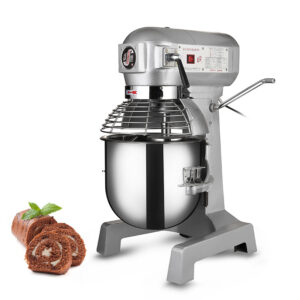
Conclusion
Summarize the key points discussed in the blog.
Reinforce the importance of following safety guidelines for planetary mixer operation.
Encourage readers to share their experiences and ask questions in the comments.



